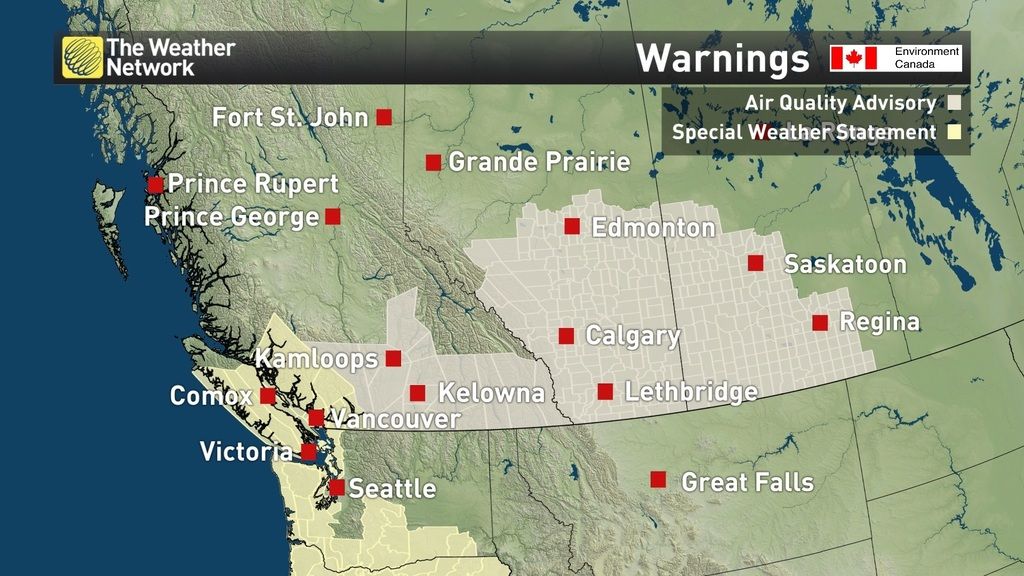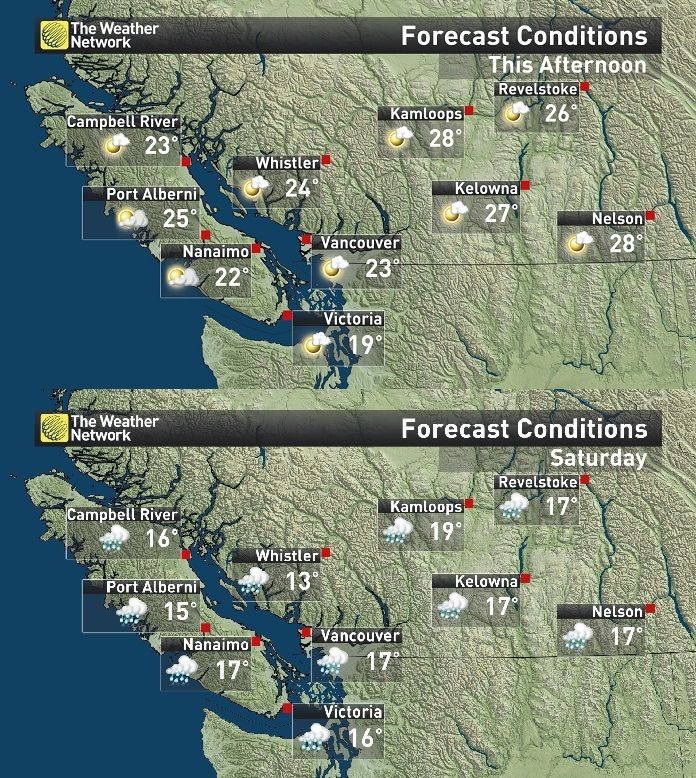Buggy machine causes inaccurate air quality readings
theweathernetwork.com
Friday, August 28, 2015, 7:11 AM - The itsy bitsy spider climbed into the sophisticated air quality monitoring station.
On Thursday, air quality advisories remained in effect for parts of B.C., Alberta and parts of Saskatchewan -- but the air quality in Calgary was not as bad as originally thought.
Earlier this week, it was reported the city of Calgary, Alta's the air quality health index was off the charts through the overnight hours Tuesday, peaking at 19 on a scale where 10 is considered "high." The index was at 16 on Wednesday morning, but rose as high as 28 on Thursday.
The mystery has been solved. A spider crawled into one of the city's three monitoring stations causing it to give high higher-than-normal readings, according to CBC.
Although Thursday's readings were originally listed as "10+", the air quality reading was actually 4, according to Mandeep Dhaliwal, the air quality program manager with the Calgary Region Airshed Zone (CRAZ).
The air quality reading returned to an accurate rating around 4 p.m. EST.
An air quality reading of four is indicative of a moderate health risk.
"This is one of those thing that you never, ever expect to happen," Dhaliwal told CBC.
He added CRAZ officials are having a hard time getting the spider out.
Environment Canada and Alberta Environment and Parks use the information from monitoring stations to calculate air quality health index levels reported on their websites.

Special air quality statements continue for parts of B.C. and Alberta. Meanwhile, Saskatchewan was added to the mix Friday. Forest fire smoke travelling in from northwestern United States has reduced visibility, creating poor air quality over much of southern and western Saskatchewan, Environment Canada reports.
B.C. officials have issued an evacuation alert for Grand Folks, Christina Lake and Testalinden Creek in the Oliver area, due to expected strong winds.
While no residents have been ordered to evacuate at this time, they have been told to prepare to leave their homes with little notice.
However, a series of low pressure systems expected to track through along the B.C. coast over the next five to seven days could help move the smoke.

"Right now the smoke is stagnant, but these system affecting the B.C. coast will help change wind speed and could help to move the smoke around," said The Weather Network meteorologist Matt Grinter. "We're not saying this will be a complete washout or that the smoke will be wiped out completely, however the trend is that the smoke will decrease."
A little less #absmoke in #Kananaskis valley, and a little more #picturesque +21 #abwx pic.twitter.com/kz0caMuFEe
— Tom Graham (@Washed_Up) August 27, 2015
The area is expected to see a more fall-like weather pattern with cloud cover and periods of on and off rain, with heaviest amounts falling over the weekend. Vancouver could see over 50 mm, which is more rain in the next four days than they have seen in the past four months, highlighted Grinter.
While a few systems have brought moderate to significant rainfall, some areas are still suffering the impacts from the dry beginning of summer. So much so, Alberta has officially declared an agriculture disaster.
Winds are expected to increase for most of southern Alberta Saturday night.
"Saturday overnight into Sunday could be really helpful for the area," Grinter explained.
"This is not the classic set up for thunderstorms, but I wouldn't rule out a rumble or two along the coast into the Interior," Grinter said.
Cooler temperatures are also on the way, courtesy of the anticipated weather systems. Whistler's high of 24oC Thursday is expected to fall to 13oC by Saturday afternoon.

Diminishing air quality levels pose a risk to everyone living in the affected areas. "In the current conditions, even healthy individuals may experience temporary irritation of eyes and throat, and possibly shortness of breath," reads the official Environment Canada statement. In other words, outdoor activity should be kept to a minimum during the current advisories. Gathering smoke has lowered visibility in many areas, with officials reminding drivers to use their headlights when travelling through the haze.
Despite the smoky conditions, firefighters in B.C. are slowly gaining the upper hand against two major fires burning in the Okanagan region, in part due to favourable weather.
One fire west of Rock Creek, which burned 45 homes and other structures earlier this month and is believed to have been human-caused, is now 75 per cent contained. Another fire near the town of Oliver is 60 per cent contained.
Around 1,750 fires have burned in B.C. this season, scorching almost 300,000 hectares.
Source: The Weather Network | BC Wildfire Service | Emergency Info BC | Calgary Herald
Related video: Science behind smoke with Chris St. Clair



